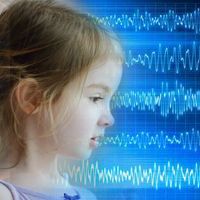Article
Autism: EEGs and Staring Spells
Author(s):
Since children diagnosed with autism spectrum disorders (ASD) may also have epileptic disorders, physicians usually want electroencephalograms (EEGs) of their brains.One sign of autism is staring spells. That can also be a form of epilepsy, an absence seizure.But an Australian study of children referred for these episodes showed EEGs offer little diagnostic benefit.

Since children diagnosed with autism spectrum disorders (ASD) may also have epileptic disorders, physicians usually want electroencephalograms (EEGs) of their brains.
One sign of autism is staring spells. That can also be a form of epilepsy, an absence seizure.
But an Australian study of children referred for these episodes showed EEGs offer little diagnostic benefit.
Ninety-two children with ASD were given EEGs, Simon Harvey, MD and colleagues reported in Archives of Childhood Disease. All were age 15 or younger. The mean age was 7 years, 5 months, and 72 were boys. The findings were normal in 80 children, the team found. Interictal epileptiform abnormalities were found in 12 children, but were judged potentially significant in only 3. Seven children had epileptiform activity that was “typical of benign focal epilepsy of childhood” and often seen in “developmentally normal children” as well as children experience development delays who do not have seizures.
“Given the difficulties of performing EEG in children with ASD, the low yield of positive diagnostic findings and the high frequency of insignificant abnormalities, we suggest that EEG should be undertaken judiciously when evaluating children with ASD and staring episodes.”
In a commentary on the study, F. Bruder Stapleton, MD, agreed. “The authors emphasize the difficulty of performing EEG in children with ASD and consider the procedure to be traumatic for some,” Stapleton wrote.
In the study subjects, 26% had behavioral problems, some requiring physical restraint.
Even when children exhibited staring episodes while the EEG was being done, none showed EEG changes. Bruder offered “a practical clinical pearl” from a colleague. “If a staring episodes is less than 10 seconds, it usually is not an absence seizure.





